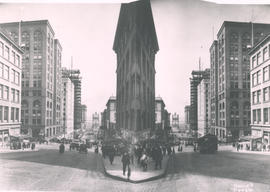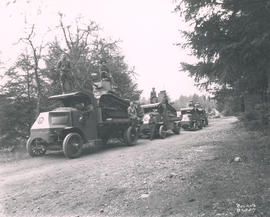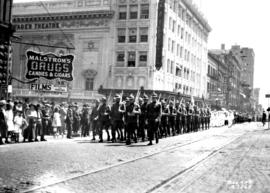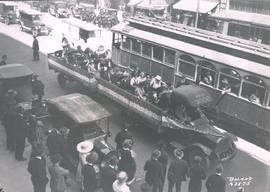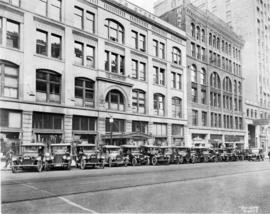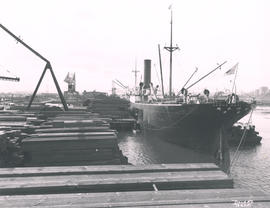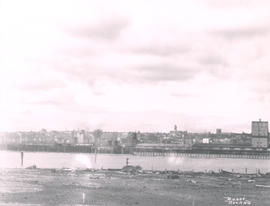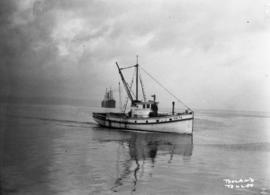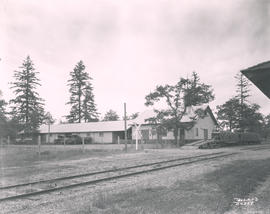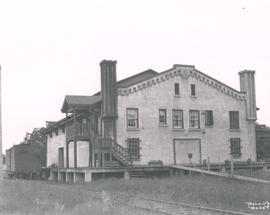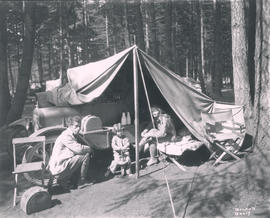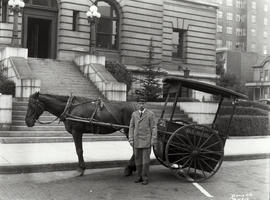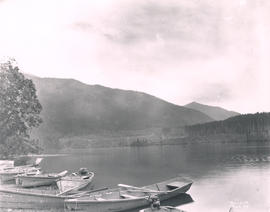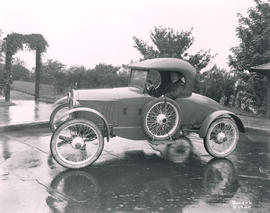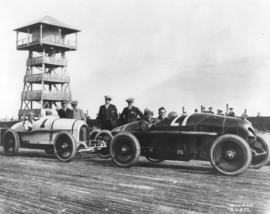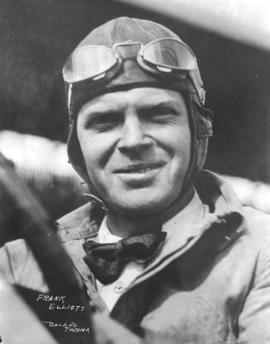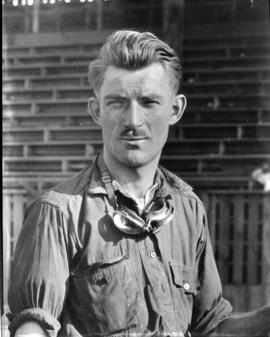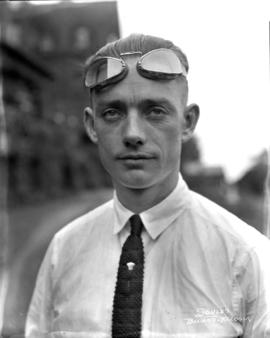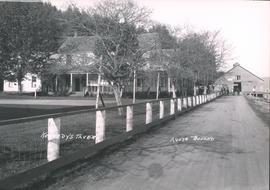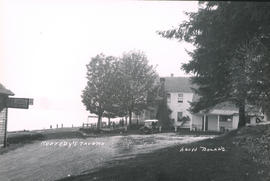- Item
- 1921-05-04
Part of Marvin Boland Photographs
At first glance, this 1921 photograph taken in downtown Tacoma appears to be of two separate streets; however, it is actually looking east down 11th Street toward the 11th Street (now Murray Morgan) Bridge. The composite picture shows the many pedestrians and occasional vehicles, including a streetcar. Prominent buildings to the left (and again on the right) are the Fidelity Building, Rust Building, and unfinished Scandinavian-American Bank Building (later completed and known as the Washington Building). The building in the center of the photograph is the Stone-Fisher Department Store, later to be known as the Bon Marche. TPL-6362; G57.1-137
Commercial streets--Tacoma--1920-1930; Business districts--Tacoma--1920-1930; Fidelity Building (Tacoma); Rust Building (Tacoma); Washington Building (Tacoma); Scandinavian-American Bank (Tacoma); 11th Street Bridge (Tacoma);
